SEO isn’t just about getting backlinks from external sources… We know that external backlinks are important, but one can’t ignore the importance of internal links as well. After all, internal linking between relevant pages helps you to build topical authority & pass link juice.
Let’s say that “Page A” on your website already has good backlinks from relevant sources. In that case, adding internal links on “Page A” to other relevant pages on your site will pass that link juice & build topical relevancy.
And last but not least, internal links also help you to provide value to the visitors. Internal links allow the visitors to read relevant content, which improves the time spent on your website (lowers the bounce rate). As a result, it ultimately helps you to deliver a good UX, which is an important SEO factor.
In short, internal links are the hidden gem that differentiates a good SEO campaign from an average one. That’s why today, we will explore the topic of internal links and also look at how you can find internal linking opportunities using the screaming frog.
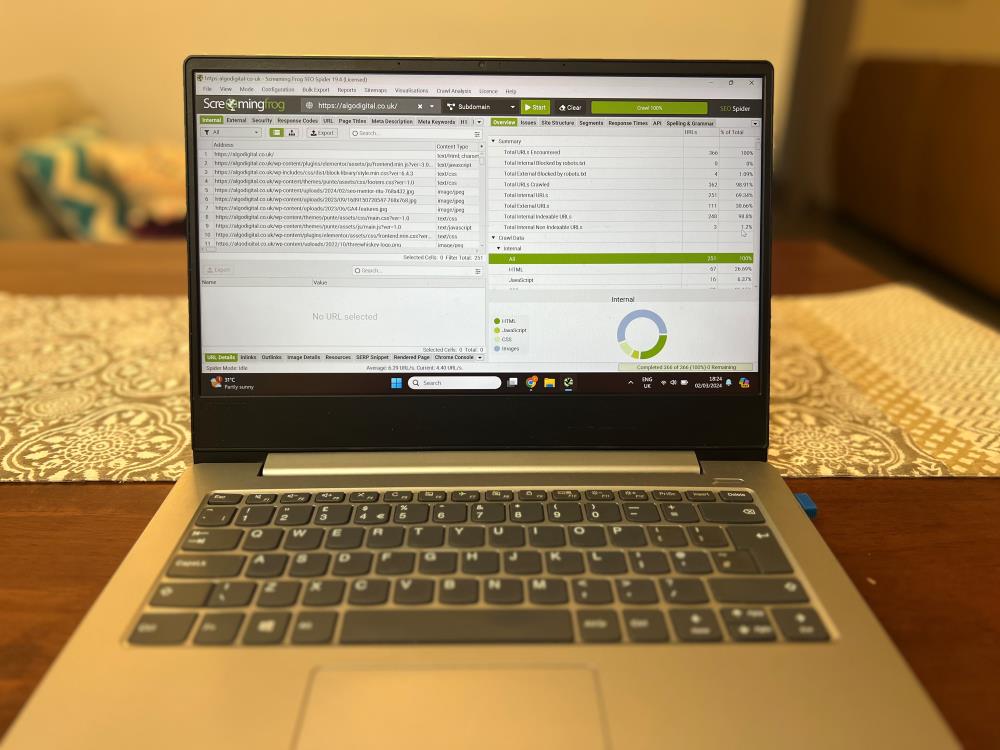
What are internal links?
A link that points to other pages on the same website is known as an internal link. These links allow search engines & users to find content on your website.
For example, a visitor that’s reading a page on your website about “personal finance” will likely click on internal links present on the page to find more information about certain terms/topics. Similarly, search engines can also use internal links to index new pages on your domain.
An internal link can be of different types depending on its location on your website. The header portion usually includes a menu which includes internal links to categories, important pages, & so on. Some other common locations for the internal links include the sidebar and the footer section.
Similarly, the internal links within the content are known as contextual links. Out of all the other types of internal links, the contextual links are the ones that carry the most value to the search engines & visitors.
Besides offering access to relevant pages on your site, these contextual links are also helpful in passing link juice & topical authority.
Are internal links still important for SEO?
Yes, internal links are still important for SEO! Although internal links are not as important as backlinks from other sites, they still play a pivotal role in SEO campaigns.
An internal link allows you to pass link authority to other pages on your site, which increases their chances of ranking higher on Google & other search engines.
Another benefit of internal links is the quick discovery of your pages by search engines. Internal links allow search engines to find & index new pages on your site quickly. After all, a page will only have a chance of getting ranked & receiving traffic from Google if it’s indexed in the first place.
The next benefit of internal links is that it helps in the discovery of your pages by visitors. This allows visitors to find relevant content on your site & thus spend more time (This lowers the bounce rate). In case you don’t know, a lower bounce rate is considered a sign of good UX, which is an important SEO metric!
In fact, even John Mueller (Senior Search Analyst at Google) confirmed that internal links are one of the biggest things that tell Google about which content is most important.

How internal links are different from external links?
As mentioned earlier, a link that points to other pages on the same website is known as an internal link. On the other hand, including a link that points to an external domain is an external link.
Internal links allow you to keep the link juice flowing within your site. On the contrary, external links mean you are endorsing another site in the eyes of Google and passing out the link juice.
Although there are numerous SEO factors, acquiring external links from reputable websites is still one of the leading factors for good rankings on search engines (Google, Bing, & others). But this doesn’t mean that one totally forgets about the internal links… After all, proper internal linking is still regarded as one of the easiest strategies in any SEO campaign.
How to find the right keywords to build internal links for SEO
One of the best things about internal links is that it offers full control over which keyword you can use as anchor text. In addition, you will also not get penalized for using keyword-heavy anchor texts in your internal links!
Now, let’s take a quick look at things that you should remember to choose the right keywords for internal links:
- Relevancy – The anchor text used for the internal links should be relevant. It is best to avoid clickbait or vague/generic anchor texts such as “this page”, “find more information”, “click here”, or “You won’t believe how this life hack can help you lose 10 KG.”
- Length – According to Semrush, the anchor text shouldn’t contain more than 5 keywords.
To find keywords that match these criteria, you first need to determine your page’s target keyword. If your page is about “5 best ways to lose weight”, then weight loss will be the seed keyword. You can use different variations of your seed keyword as anchor texts for the internal links.
Another way to find good keywords for your internal links is to search your target keyword on Google:
- Go to google.com and search your seed keyword (For example: weight loss).
- Scroll down to the bottom of Google’s search results to find LSI keywords.
- Pick the LSI keywords that are relevant to your page.
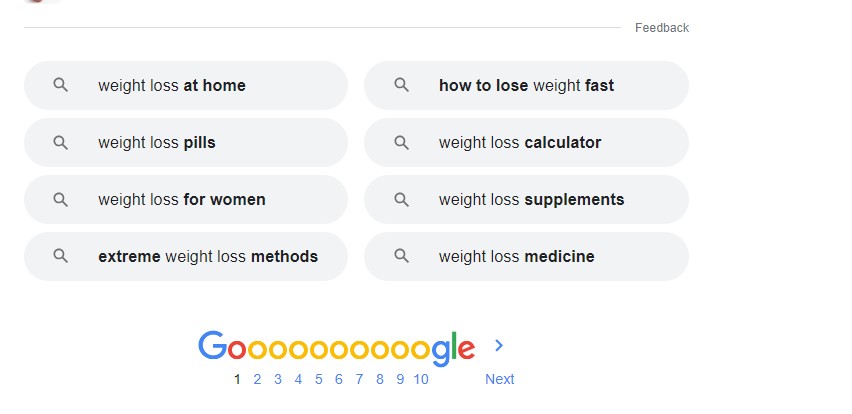
In addition, there are several keyword-finder tools for finding the right keywords for internal links, such as Keysearch and Ubersuggest.
How to find internal links opportunities using Screaming Frog
We will use the Screaming Frog SEO tool to find internal linking opportunities. Although there are numerous ways to use this tool, we will focus on custom extraction and search feature.
Use custom extraction of Screaming Frog to find internal links opportunities
The custom extraction feature of Screaming Frog enables you to only crawl the website based on your given parameters. By default, it allows you to crawl your website using Regex, Xpath, and CSSPath. In this tutorial, we will use the CSSPath option.
Step 1) Find CSS Selector
One of the benefits of using the CSSPath method is that you can search for content based on your selected parameters. This means you can exclude the content in the header, navigation menu, or footer section.
For this tutorial, we will use comparethemarket.com as an example. To begin, open up the Google Chrome browser and navigate to comparethemarket.com (You will open the website for which you want to build internal links).
Wait for the website to load completely, then highlight the first instance of content you see on the page with your mouse. Now, press the right-click button & choose the “Inspect” option.
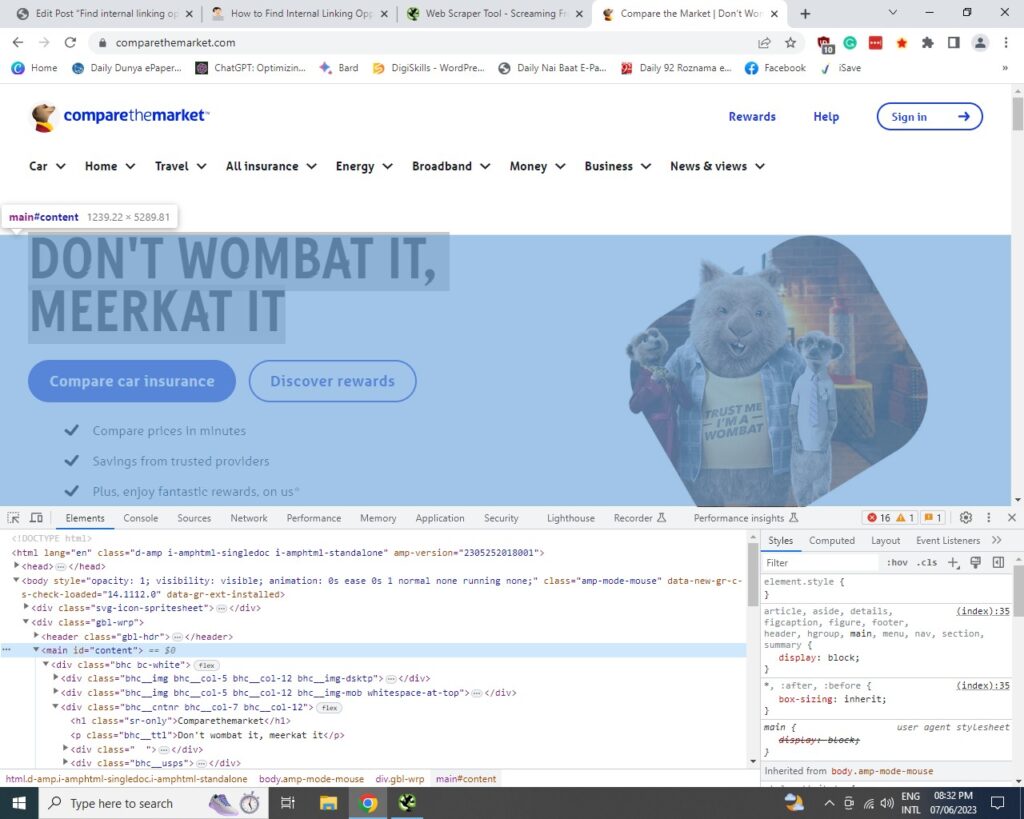
This will open the Google Developer Tools window, which might scare you but don’t be! Once this window is open, start to hover your mouse over the code until all the content is highlighted on the page. If you did it correctly, it would only include the main content without the header and navigation menu.
In our example, the class ID for finding the page content is “content”, but it might differ from website to website (the steps for finding the class ID will remain the same).
Once the right ID is located, press the right-click button and navigate to Copy > Copy Selector.
Step 2) Run Custom Extraction on Screaming Frog
Open the Scream Frog application and click on Configuration > Custom Extraction. Once a new window is open, click on the first field to give a name to your custom extraction (for example: “Content”).
Now, select the CSSPath option and enter the class ID we extracted earlier (#content). Select “extract text” from the next option and hit the OK button.
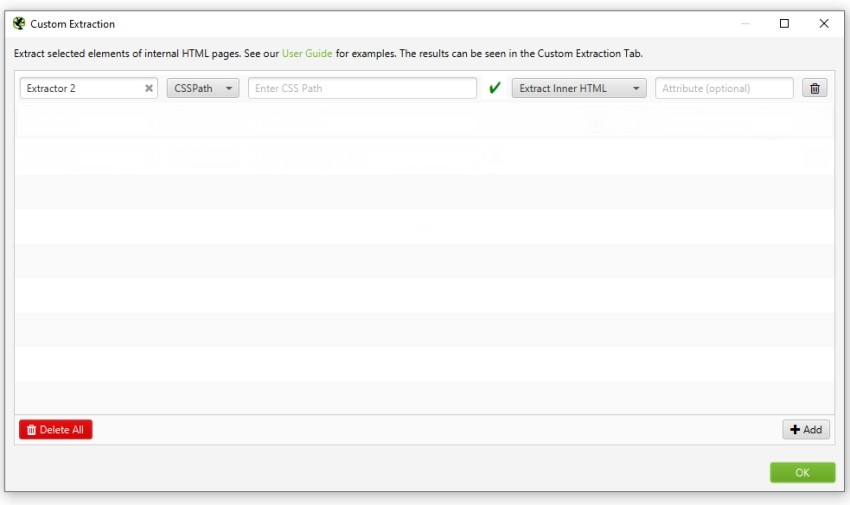
Now, enter the domain name and click on the start button to initiate the website crawl. In our case, we will enter https://www.comparethemarket.com as an example.
Once the crawl is complete, open the custom extraction tab and click on export to get an Excel data file.
Step 3) Data Filtration
You will notice many columns and rows once you open the Excel file. For this tutorial, we will only need these columns:
- Address
- Custom Extraction (the name you defined for custom extraction in Screaming Frog. In our case, it will be content).
You can remove all the other columns to keep the Excel file tidy and clean.
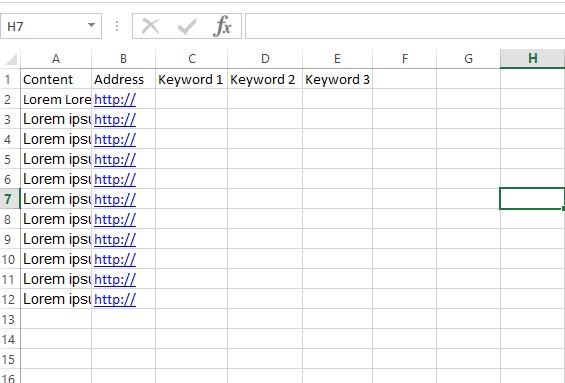
Now, create new column headers using the keyword you want to find from the extracted data. Once this is done, enter the following formula in the first empty cell under the first keyword column (C2 in our case).
=(LEN($A2)-LEN(SUBSTITUTE(UPPER($A2),UPPER(C$1),””)))/LEN(C$1)
In this formula, the A2 is the location of the content, while the C1 is the location of the first keyword. You might need to change these cells depending on where the address and content columns are present in your Excel sheet.
Now, simply drag the first cell and apply it to all the keywords.
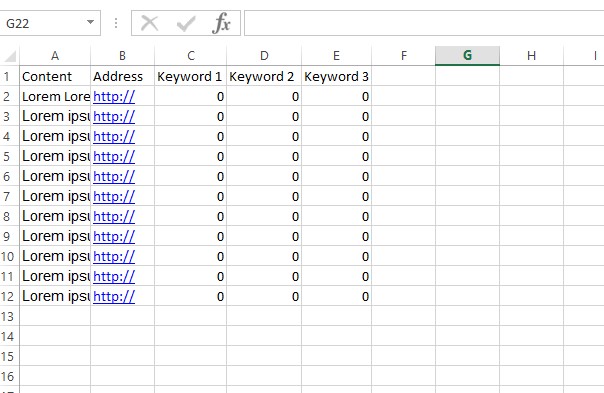
This formula will show how often the target keyword appears in the content. Using this information, you can easily open the specific page on your site and add a relevant internal link to the content.
Use custom search of Screaming Frog to find internal link opportunities of SEO
Another way to use the Screaming Frog to find internal linking opportunities is the custom search. When compared with the custom extraction feature, this one is very easy.
To start, open the Screaming Frog and navigate to Configuration > Custom Search from the menu. Then click on the “Add” button (green colour) at the bottom right corner. Now, you can enter the parameters for a custom search using Screaming Frog.
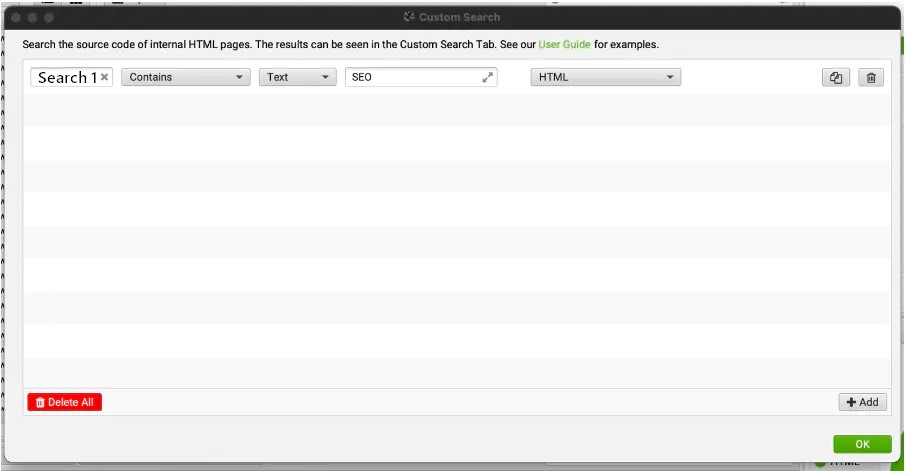
The first field is for “name”, which can be anything you want. For the next two options, select “contains” & “text”. The next field is for entering the target keyword. In the last option, select the “HTML” option as we want to search for that keyword in the HTML. Once all is set, click the OK button to save your custom search preferences.
Now you can enter your website URL in the Screaming Frog and click on the start button to initiate the crawl.
You will start to see the crawl data in real time by visiting the “custom search” tab. However but it is best to wait for the application to finish the crawl (Feel free to take a quick break if your website has a lot of pages).
Once the crawl is complete, change the filter from “All” to “Contain” to only see the links where your target keyword appears.
Now all that’s left is to go to those relevant pages to insert internal links & pave your way to a successful SEO strategy!
Recommendations to make the most of the internal links for your organic strategy
These recommendations for internal linking will help you to get the most out of it:
- Be free to use keyword-rich anchor texts for your internal links. Unlike external links, you won’t get penalized for using exact-match keywords.
- Don’t use the same keyword as anchor text for more than 1 page on your site. The use of same anchor text for 2 or more internal links creates competition within your own pages.
- Remember not to use the nofollow tag for internal links. All the internal links on your site must be dofollow by default.
- In most cases, the homepage is the one with the most link juice. So remember to only link out to your most important pages from the homepage.
Conclusion
As you can see, Screaming Frog takes the trouble out of finding the relevant pages for internal linking. With Screaming Frog, you can automate the entire process, which would otherwise take hours of manual labour.
In this post, we have shared 2 different methods to find the internal links using the Screaming Frog. You should start with the custom search option since it takes less time & then move to custom extraction if you can’t get good results.
At Algo Digital, we take pride in using the best SEO strategies to help businesses grow and prosper online. Just like the internal linking strategies mentioned above, our SEO campaigns ensure that clients stay at the forefront of the competition.
With our growth, strategy, and superior marketing service, you get all the things needed to outclass the competition!



